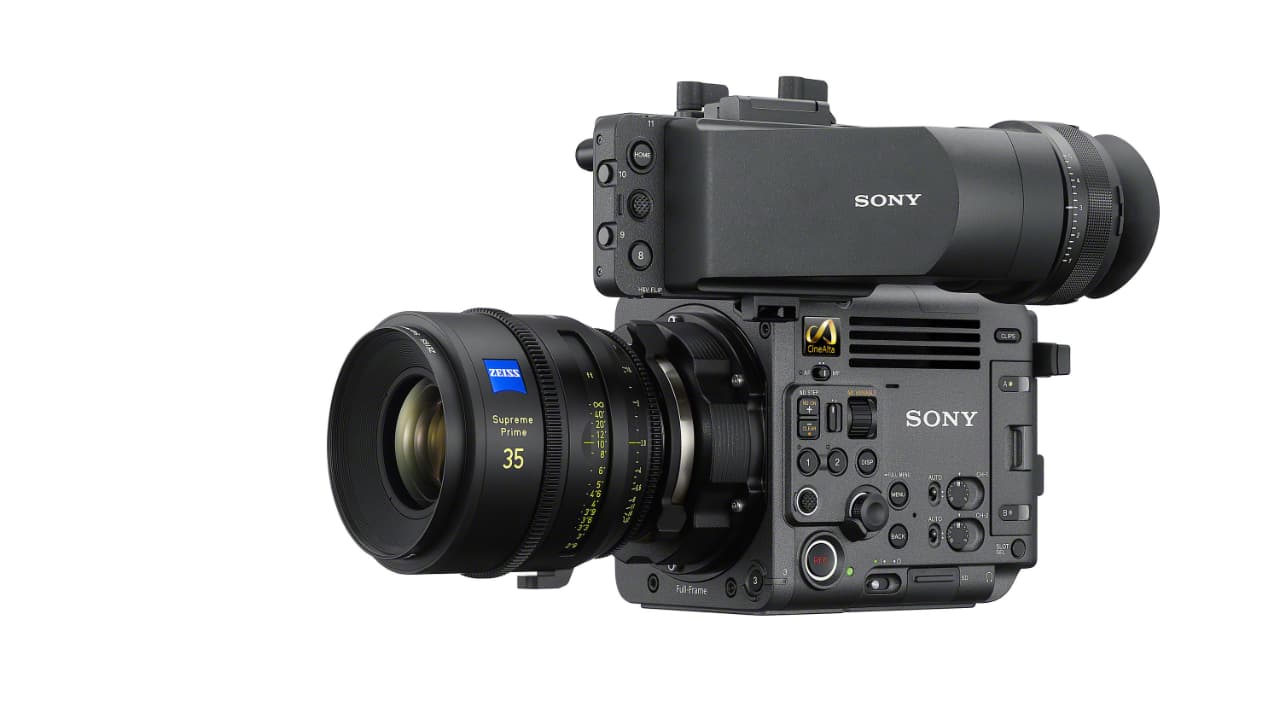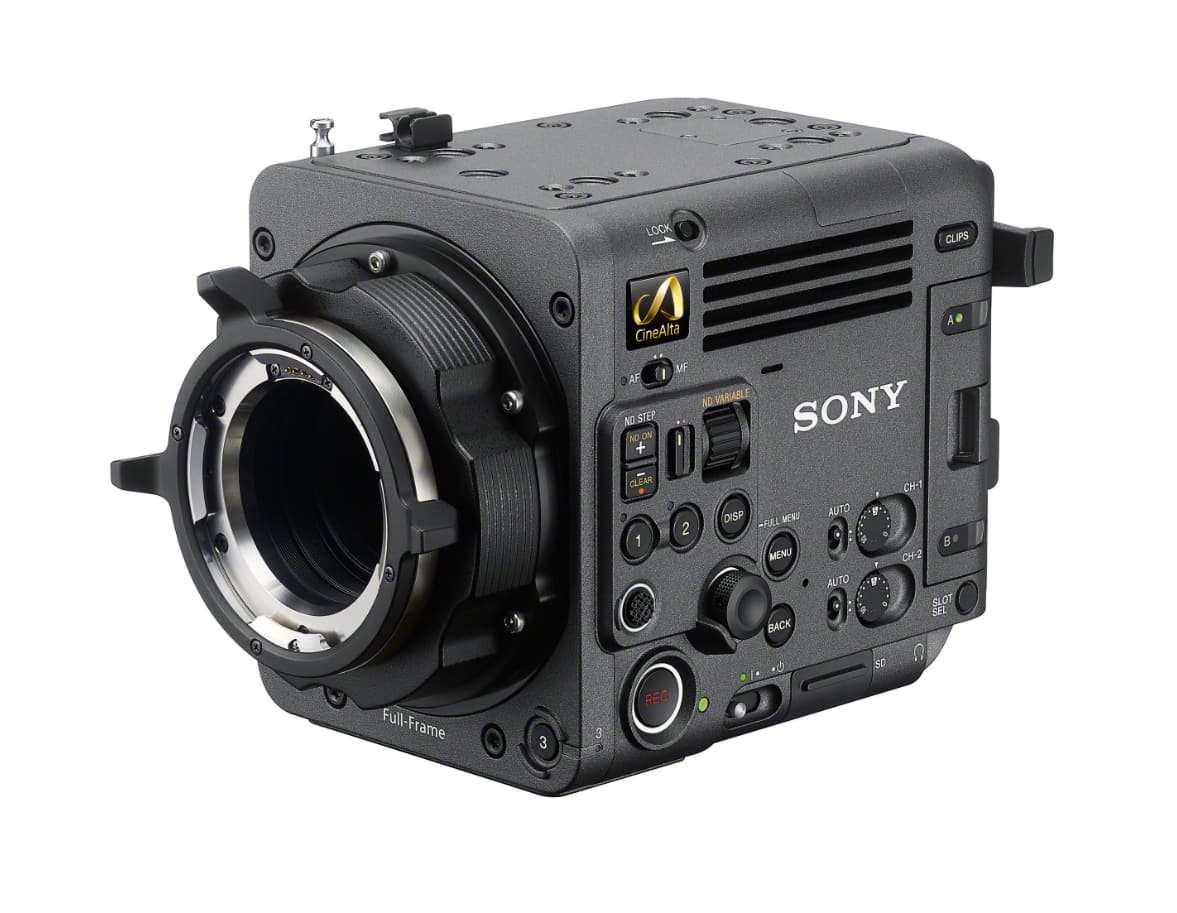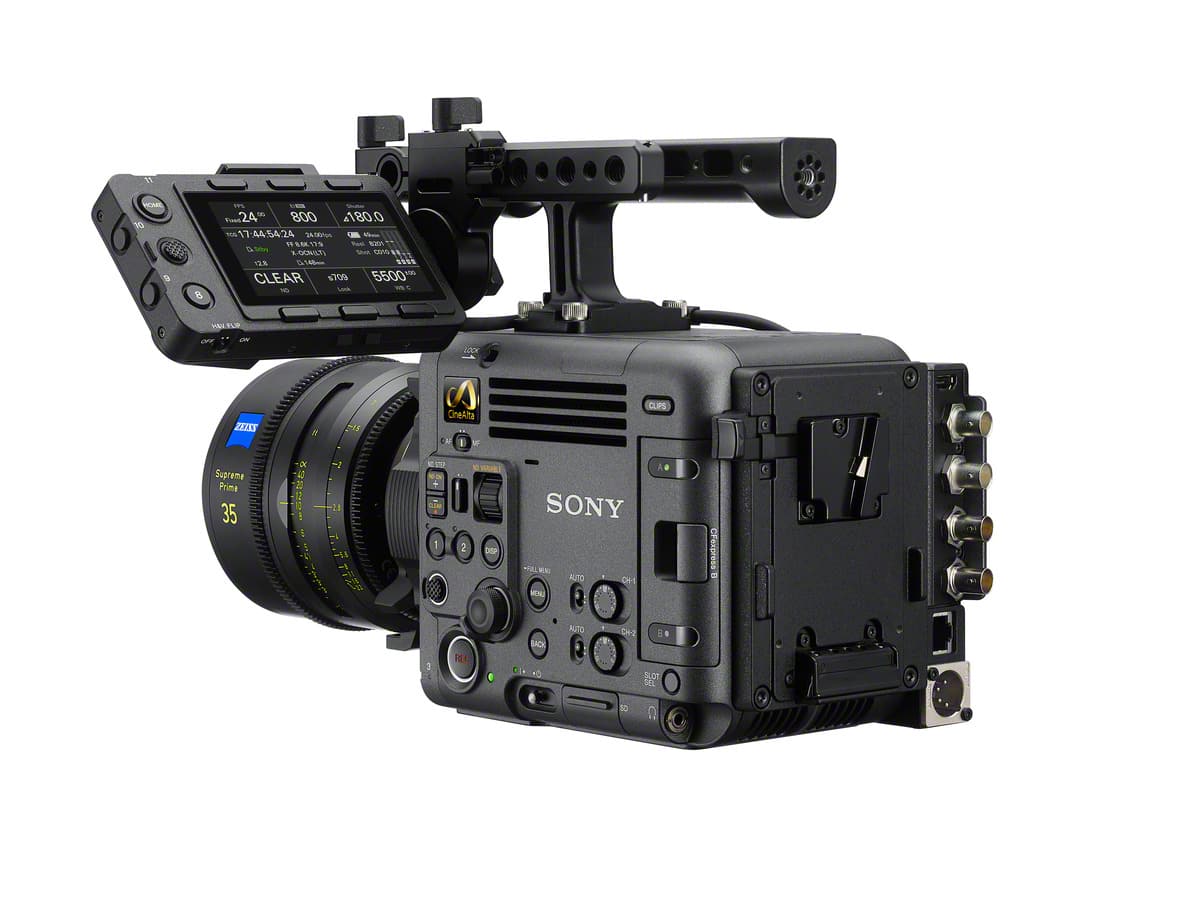
A brand new cinema camera, the Sony Burano, debuts at IBC2023 with impeccable credentials and top-line features including an electronic variable ND filter, in-body stabilisation, and more.
Don't mistake Sony's new camera for the Soviet Union space shuttle, a popular Mexican dish, or a small island close to Venice.Wait, what? Oh, right. Apparently, Sony's new camera is actually named after that Italian island. And the reasons why will rapidly become apparent.
Venice has been around for six years since its launch in July 2017. At the time, Sony's professional division's slogan was "beyond definition". That may have seemed presumptuous when the camera couldn't shoot 8K, but it made a credible point that the quality of the images from Venice had less to do with a pixel count and more to do with the net effect of shooting with a great camera, with an excellent sensor, and the entirety of Sony's decades of colour processing know-how on board. The Venice 2 with an 8.6K sensor was launched in February 2022, bringing the Venice bang up to date.
Burano is a very close sibling to Venice. It's all the bits that make the Venice distinctive and great, but in a smaller, more compact body, optimised for single operators. None of this precludes it from being used on a high-end film set, but the idea is that a single operator, or a small team, can make films matching Venice's output but for a lower cost and with less need for an entire supporting crew. At around two-thirds of the weight of Venice 2, it's a Venice with added mobility and a dramatically reduced price point of $25,000.
Yes, $25,000.
But there is more to the story too, because the Burano introduces some major innovations. Just because it's cheaper doesn't mean Sony's dropped the ball on anything.
Let’s step through them…
Sony Burano features

Electronic variable ND filter
An Electronic ND filter brings a new axis of control to a cinema camera. We'll have to wait for the reviews, but it's hard to imagine this will not be transformative - especially for depth of field and a range of creative effects. With a 35mm Full Frame sensor and the electronic ND filter, the Burano should be capable of spectacular bokeh.
In-body stabilisation
A must for mobile shooting, in-body stabilisation works with PL lenses and Sony E-mount glass, with additional functionality with the latter optics, including five-axis stabilisation. It is the first cinema camera to support in-body stabilisation for PL lenses.
Fast Hybrid Autofocus
Burano's autofocus includes subject recognition and uses phase detection as well as contrast detection.
New built-in looks
Even though footage shot on cinema cameras tends to be colour-graded in post, there are times, especially when shooting with a quick turnaround, when built-in looks can be helpful. The new looks are Warm, Cool, Vintage and Teal and Orange.
16-stop dynamic range
Dynamic range figures are always debatable to some extent because they require some agreement about the level of noise in the picture, and very few manufacturers agree. But, however this is measured and judged, 16 stops is likely to mean that the Burano has an extremely low noise floor and a very usable dynamic range. This matters when pushing the camera in extreme conditions and directly influences what can be done cleanly in post.
Recording formats
Burano supports X-OCN LT, XACV H and XAVC formats. X-OCN LT is a compressed RAW format, retaining a full 16 bits per pixel - ideal for nuanced post-production. XAVC H is an evolution of Sony's original XAVC codec, capable of recording 8K30p video.
Storage
The camera has two CFexpress type B slots. Sony's CFexpress VGP400 cards support extremely high, sustained data rates.
The camera of the future?

Sony's latest addition to its storied Cine Alta range is a deep and well-thought-out camera. At first sight, it seems ideally pitched to appeal to a wide range of users, from DPs looking for a lighter, more mobile camera for rapid action on set to documentary makers looking for high-end images for their Netflix ambitions. Between those two extremes, the camera seems ideal for scripted productions for OTT networks.
All of this raises an important question about the direction of cinema cameras in the future. The last ten years have been characterised by an exponential growth in sensor resolutions. During that time, digital cinematography has improved and has passed the threshold where it is reasonable to question whether video will ever be the equal of film. The nuanced output from Sony's Venice cameras ends that discussion.
Now, with the Burano, that level of quality is available to a much wider range of camera users, and it gives us an answer about future camera trends. With pictures this good, there seems little point in going much beyond 8K - at least for now. What's far more important is to improve usability, and that's precisely what Sony has done with its new camera. Impressive.
Tags: Production Featured Cameras


Comments